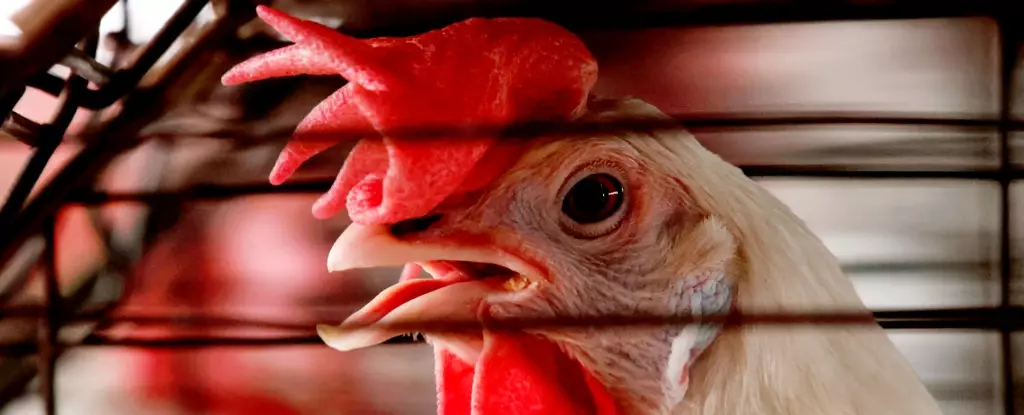The specter of a pandemic has consistently plagued global health experts as they monitor the developments surrounding avian influenza, commonly known as bird flu. The emergence of this virus, particularly its H5N1 strain, poses significant concerns not only for the poultry industry but also for human health. Over recent months, the narrative has shifted, as increasing reports of the virus’s evolution have sparked fears of an impending health crisis. This article examines the current situation, the alarm among health authorities, and the implications of potential mutations.
The Evolution of H5N1: A Global Perspective
First identified in China in 1996, H5N1 has historically remained confined mainly to birds. Yet, the past few years have illustrated a dramatic shift in its geographical spread and host range. The World Organisation for Animal Health has provided alarming statistics, noting that over 300 million poultry birds have been lost to culling or mass mortality since October 2021. The virus has reached diverse ecosystems, including wildlife in Antarctica, prompting concerns about its virulence and adaptability.
What has captured particular attention is the broader impact on wildlife, with reports of mass die-offs among various species of birds and mammals, including seals. Such trends suggest a more complex ecological interface where the virus is not merely a concern for poultry but could infiltrate human populations through various routes, given the interconnected nature of wildlife and domestic animals.
Recent developments have seen H5N1 infecting dairy cattle in the United States, a situation that has never been witnessed before. The Centers for Disease Control and Prevention (CDC) reported that 58 individuals have tested positive for the virus this year, and two of these cases were linked to no known animal exposure. This pattern raises significant questions regarding undetected human infections, as evidenced by studies which revealed that 7% of dairy workers in tested regions had developed antibodies for avian influenza.
The concern escalates when experts warn that the virus could be just one mutation away from achieving enhanced transmissibility among humans. Virologist Ed Hutchinson of the University of Glasgow highlights that ongoing research suggests the H5N1 currently infecting livestock is alarmingly close to becoming a more potent threat to human health. As the virus circulates through various host species, the possibility of adaptations to its structure increases, making future spillover events more probable.
The Human Threat: Current Cases and Fatality Rates
Despite the apparent severity of the situation, it is essential to contextualize the current human cases. While a handful of infections have been documented, they have largely remained mild. However, the fatality rate accompanying H5N1 infection is stark, with nearly 50% of the 904 cases reported globally since 2003 resulting in death. This suggests that even a small number of cases can translate into significant mortality if the virus evolves to improve its infectivity and leads to widespread human-to-human transmission.
The prospect of a bird flu pandemic is alarming, especially since most individuals lack pre-existing immunity, marking an unprepared population for a potentially devastating outbreak. Health experts underscore the urgency of surveillance and preparedness as critical factors in mitigating the impact of a virus that has long been regarded as a ticking time bomb.
While the bird flu situation raises daunting scenarios, experts offer a glimmer of hope. Virologist Tom Peacock points out that preventive measures, including antiviral treatments and vaccines, were nonexistent in the early stages of the COVID-19 pandemic. This time, health authorities have tools at their disposal, suggesting a potential edge in managing H5N1 should it begin to spread among humans effectively.
Preventing the worst outcomes hinges on robust testing and vigilant monitoring. The USDA has initiated plans to test the nation’s milk supply for bird flu, especially focusing on raw or unpasteurized milk, an area of concern given its history of contamination. Interagency cooperation and international collaboration will be pivotal in sharing critical information to ensure swift responses to any emerging threat.
As bird flu continues to circulate and evolve, the call for vigilance remains paramount. The potential for this virus to cross the species barrier and establish itself as a human pathogen is not just a theoretical concern but a real possibility that requires proactive measures from health agencies worldwide. Increased testing, clear communication, and preparedness plans can mitigate the risks associated with this virulent strain. The global community must remain alert as we navigate the precarious intersection of animal disease and human health, ready to confront any challenges that arise.


Leave a Reply